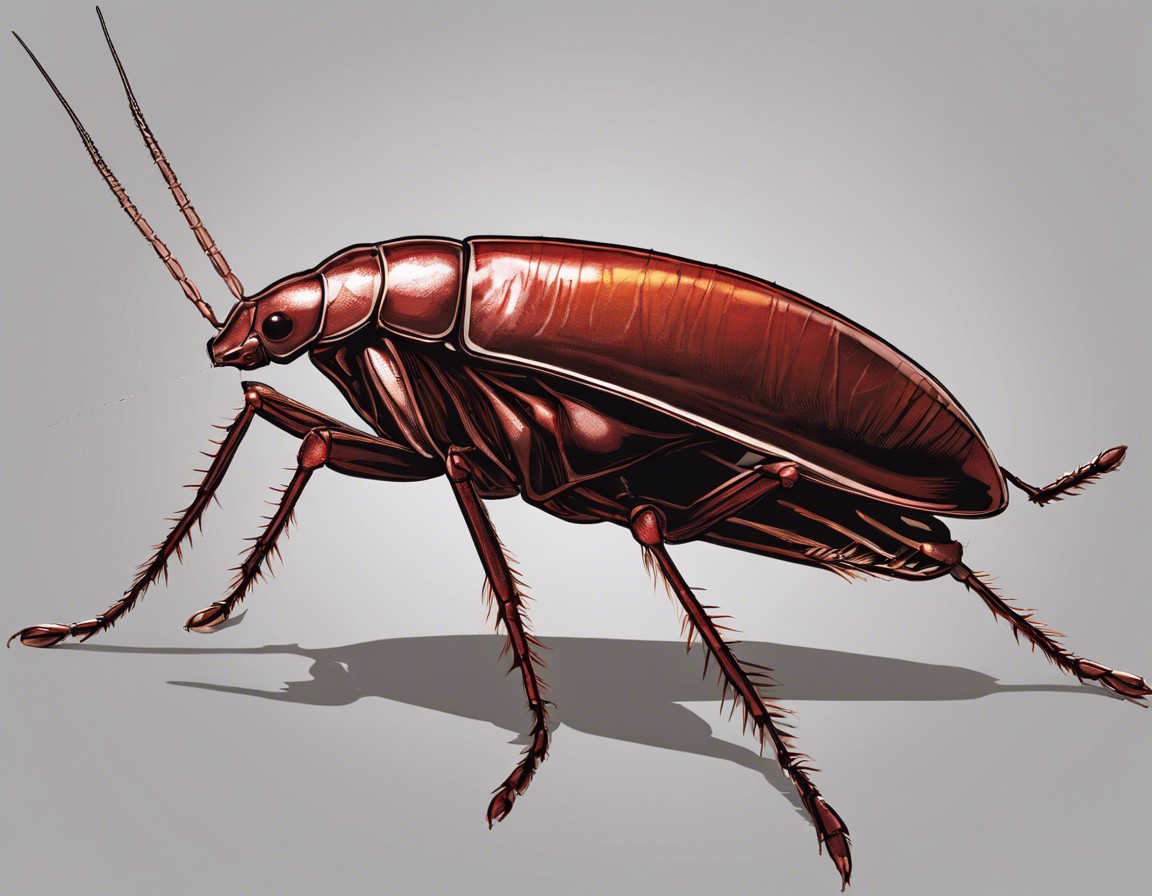
Hvis du noensinne har støtt på en orientalsk kakerlakk, er du sannsynligvis klar over det ubehagelige scenariet det utgjør. Dette skadedyret, som er kjent for sin evne til å trives i kjøligere miljøer, utgjør en global utfordring på grunn av sin utbredelse. Kjent for sitt beskjedne utseende med en skinnende blank overflate og fargen som varierer fra rød til svartbrun, er orientalsk kakerlakk en uønsket gjest i mange hjem. La oss dykke dypere inn i deres livssyklus, atferd og spredning, samt hvordan man kan forebygge og bekjempe dem.
- Kjenne igjen: Middels stor, rød til svartbrun, blank overflate.
- Adferd: Kan gjøre skade på matvarer og materialer, potensiale for sykdomssmitte og allergi.
- Spredning: Hyppigst via menneskelig aktivitet som import av varer og reiser.
- Bekjempelse: Rensing, tetting av sprekker, hyppig inspeksjon, og sprøyting.
Oriental Cockroach: A Global Presence
The oriental cockroach is a species that is prevalent all over the world. Their worldwide distribution is wide-ranging despite their relative rarity in Norway. Their adaptability to various environments, even those with cooler temperatures, allows them to thrive where other tropical cockroaches cannot.
Recognizing Oriental Cockroaches
Some notable characteristics distinguish the oriental cockroach. Medium-sized, they boast a glossy surface and range in colour from red to black-brown. Male specimens have wings shorter than their abdomen, while the females have reduced wing stubs.
Lifecycle of the Oriental Cockroach
The lifecycle of the oriental cockroach consists of several stages. Firstly, eggs are laid in a capsule which then hatches after 60 days. The nymph stage follows and lasts approximately one year, comprising seven to ten immature stages. The adult stage sees the cockroach reach up to 2.5 cm in length, boasting the same shiny surface and red to black-brown colour as the nymph.
Oriental Cockroach Behaviour
Oriental cockroaches exhibit specific behavioural patterns. These insects are omnivorous and nocturnally active, preferring to hide during the day. Their preferred habitats are dark and moist areas. Notably, they are photophobic, making swift retreats when exposed to light or disturbances.
Oriental Cockroach Dissemination
The spread of oriental cockroaches can be primarily attributed to human activity. Importation of goods, travel, and luggage can all contribute to distribution. However, due to Norway’s climate, there is limited potential for natural dispersion.
Oriental Cockroach as a Pest
Oriental cockroaches pose a significant nuisance as pests. They feed on and contaminate food items with their droppings and unpleasant-smelling secretions, causing damage to materials as well. Furthermore, they are potential vectors for disease and allergies. Notably, their presence may also cause psychological stress among people.
Prevention and Control Measures
Effective prevention and extermination strategies are crucial in managing oriental cockroach infestations. These include cleaning, sealing off cracks, regular inspections, maintenance, and pesticide application. Controlling temperature by reducing humidity is also an essential preventive measure.
Conclusion
The Oriental cockroach presents a significant challenge due to its ability to survive in cooler climates. It’s vital to be vigilant and apply effective preventive measures if an infestation is suspected.



